| Gemstone Chart |
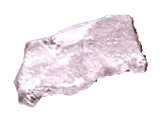 Natural Oligoclase Natural Oligoclase
Oligoclase is a rock-forming mineral belonging to the plagioclase feldspars. Oligoclase is famous for its two gem varieties: Sunstone and Moonstone.
Color: green, orange, red, colorless
Categories: semi-precious stone
Chemical Composition: [Na,Ca]AlSi3O8
Crystal Group: Triclinic
Refractive Index: 1.53 - 1.54
Hardness: 6 - 6.5
Density: 2.62 - 2.65
Occurrence: Tvedestrand and Hitero on the south coast of Norway; near Lake Baikal Russia; Ontario, Canada; Tanzania; Kangayam, southern India; France; and in Maine, New Mexico, New York, North Carolina, Pennsylvania, Virginia and Oregon in the USA.
| 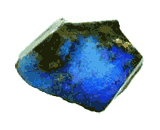 Natural Opal Natural Opal
Opal is the most colorful of all gems. It is a form of silica chemically similar to quartz, but more like glass and containing a variable amount of water within the mineral structure. Its splendid play of color is unsurpassed, and fine examples can be more valuable than diamond. Precious opals (black and white) are cut and polished into cabochons and used in all forms of jewelry.
Color: White, green, blue, black, red, orange, violet, pink, grey, yellow.
Categories: precious stone
Chemical Composition: SIO2nH2O
Crystal Group: Amorphous
Refractive Index: 1.44-1.46
Hardness: 5.5 - 6.0
Density: 2.65 - 3.00
Occurrence: Czechoslovakia, Mexico, Honduras, Australia, Brazil, Tanzania.
| 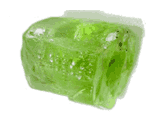 Natural Peridot Natural Peridot
Peridot is the best known gem variety of olivine, a species name for a series of magnesium-iron rich silicate minerals.It is one of the prettiest of all green gems.Most peridot formed deep inside the earth and was brought to the surface by volcanoes. Some has also come to Earth in meteorites, but this extraterrestrial peridot is extremely rare, and you're not likely to see it in a retail jewelry store.
Color: Green, olive.
Categories: semi-precious stone
Chemical Composition: (Mg,Fe)2(SiO)4
Crystal Group: Orthorhombic
Refractive Index: 1.654-1.689
Hardness: 6.5
Density: 3.34
Occurrence: China, Burma, East Africa, U.S.A., and Vietnam
| 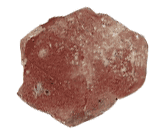 Natural Pezzottaite Natural Pezzottaite
Pezzottaite is a raspberry-red to pink member of the Beryl Group named after Dr. Federico Pezzotta. Discovered in Madagascar and IMA approved in 2003. It is one of the great new gem discoveries of the last 20 years.
Categories: semi-precious stone
Crystal Group: Trigonal
Refractive Index: 1.604 - 1.615
Density: 3.1
Occurrence: Madagascar, Afghanistan
| 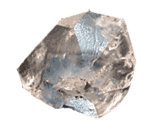 Natural Phenakite Natural Phenakite
phenakite is a fairly rare nesosilicate mineral consisting of beryllium orthosilicate, It is one of the brightest of the colorless gemstones.Madagascar seems to be the most important source for this rare stone.
Color: White
Categories: semi-precious stone
Chemical Composition: Be2SiO4
Crystal Group: Hexagonal
Refractive Index: 1.651-1.696
Hardness: 7.5-8.0
Density: 2.94--2.96
Occurrence: Russia, Madagascar, U.S.A., Brazil, France, Switzerland, Ceylon, E. Africa.
| 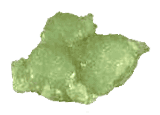 Natural Prehnite Natural Prehnite
Prehnite is a hydrated calcium aluminum silicate that occurs in a soft yellow-green to apple-green color.It was a rare gemstone, most prehnite is translucent but transparent specimens are sometimes found.While you are unlikely to find it in your local jewelry store, gemstone dealers often have some supply. Deposits are found in South Africa, Australia, China, Scotland and the United States.
Color: yellow green, brown, yellow brown, oil green
Categories: semi-precious stone
Chemical Composition: (CA2Al2SI3O10(OH)2)
Crystal Group: Orthorhombic
Refractive Index: 1.61 - 1.64
Hardness: 6
Density: 2.80 - 2.95
Occurrence: China, France, U.S.A., Scotland, Australia
| 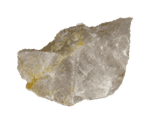 Natural Quartz Natural Quartz
Quartz is the most common mineral on the face of the Earth. It is found in nearly every geological environment and is at least a component of almost every rock type.There are many different varieties of quartz, several of which are semi-precious gemstones.
Categories: semi-precious stone
Chemical Composition: SiO2
Crystal Group: Trigonal
Refractive Index: 1.544 - 1.553
Hardness: 7
Density: 2.65
| 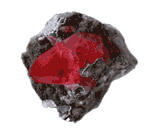 Natural Rhodochrosite Natural Rhodochrosite
Rhodochrosite is a manganese carbonate mineral with chemical composition MnCO3. The pink color of rhodochrosite is caused by the element manganese and it is formed when manganese is dissolved by ground water and combines with a carbonate material and then drips off the ceiling of caves and crevices deep underground.Rhodochrosite often forms pink and white bands. It is often carved into figurines or boxes while the tubular stalactite formations are often sliced for use in jewelry. Fine gem quality crystals are sometimes cut into gemstones for use in high end jewelry, but the more common grade is used extensively in silver and gold jewelry.
Color: Rose red, raspberry red, pink, grey, fawn, brown
Categories: semi-precious stone
Chemical Composition: MnCO3
Crystal Group: Trigonal
Refractive Index: 1.600 ĘC 1.820
Hardness: 4
Density: 3.45 ĘC 3.70
Occurrence: Argentina; Colorado, U.S.A.; Romania; Hungary; India; South Africa; Saxony, Chile; Peru; Mexico.
|
|
